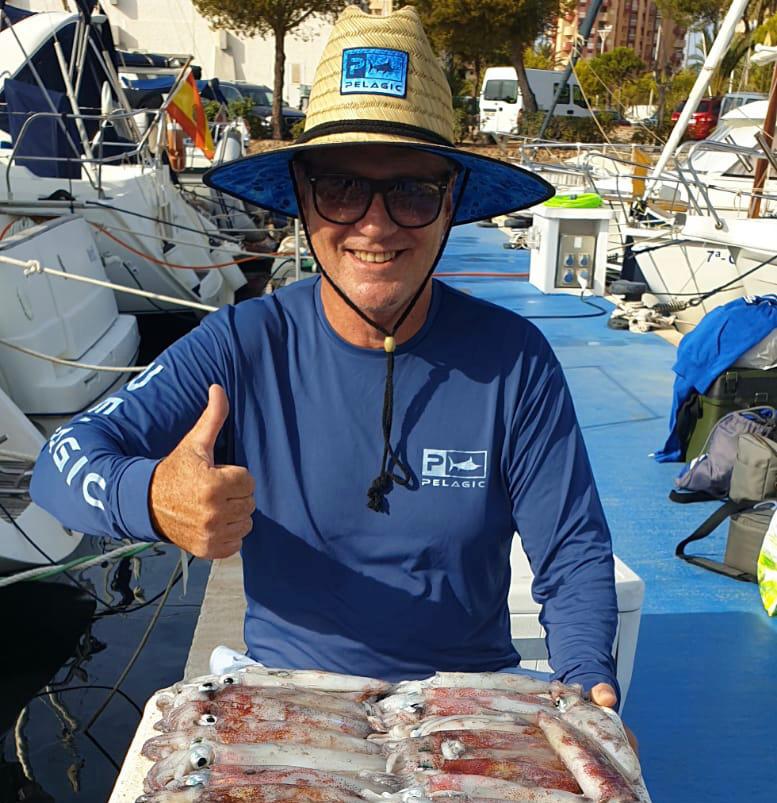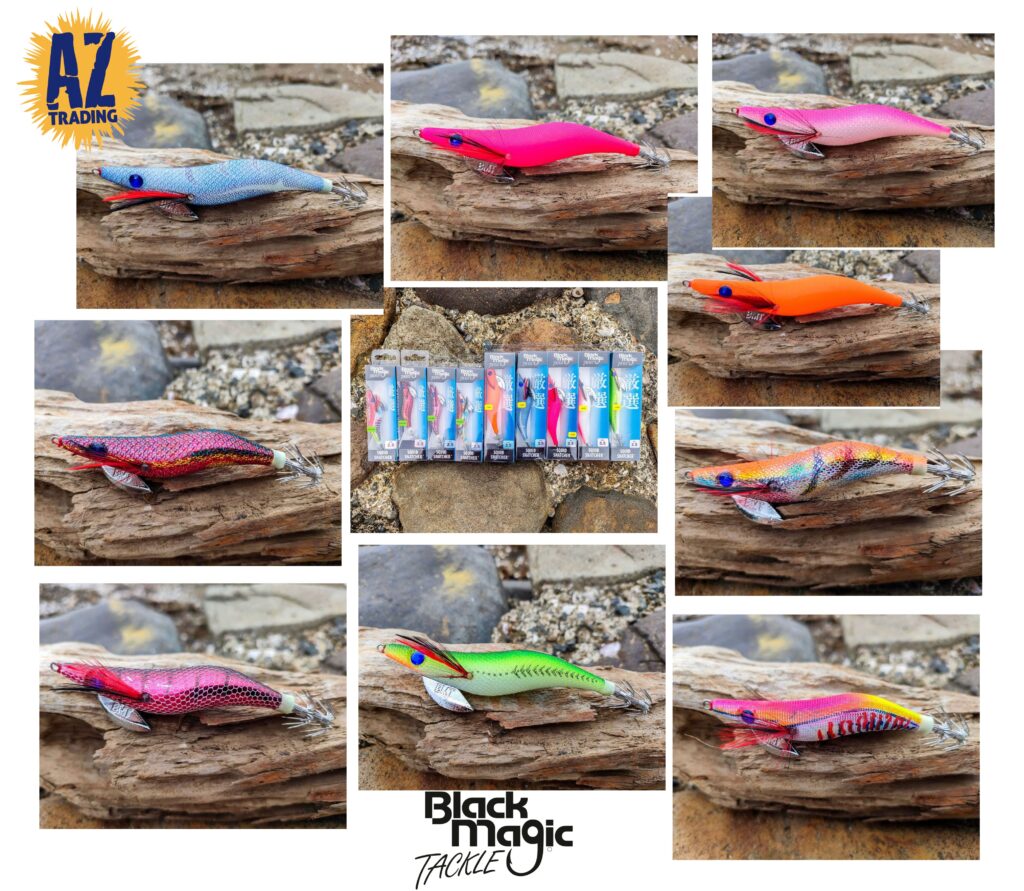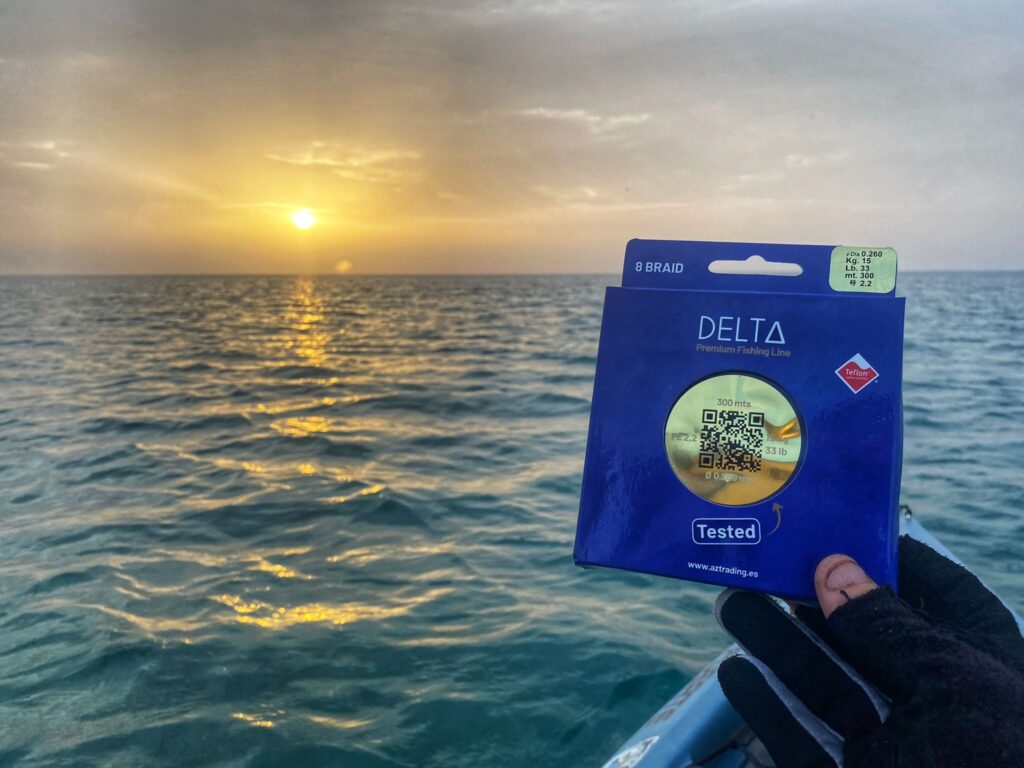
HOW TO CATCH SQUID, CUTTLEFISH, OR OCTOPUS - MATERIALS TO BE USED
Eging: Fishing for cephalopods in the sea.
You are entering one of the most captivating corners of sport fishing! Fishing squid, cuttlefish, octopus and squid, is an adventure that although relatively simple, captivates fans with its entertainment and accessibility.

What is Cephalopod Fishing or Eging?
Eging is a form of sport fishing practiced worldwide in marine environments. Depending on your geographical location, you may find a greater or lesser presence of squid, cuttlefish and octopus.
This technique consists of catching these cephalopods using mainly artificial lures that imitate small fish or crustaceans, their natural prey.
In Eging, it is possible to catch adult squid, young squid, squid, cuttlefish and sometimes even octopus, all attracted by the lures.

Ideal location to fish for cuttlefish and squid.
Squid and cuttlefish fishing is usually carried out in port areas or docks, where crustaceans and small fish are abundant and find refuge in these areas.
It is also feasible to catch them from beaches, cliffs or rocky areas, although in this case a more resistant and robust equipment is required due to the casting distance and, in some cases, the need to lift the catch vertically.
Cuttlefish tend to be fished in greater numbers during the breeding season, when they gather in relatively large schools for courtship between males and females. Thus, they can be found in both sandy and rocky areas, depending on the preferences of each area.
In contrast, squid tend to prefer areas with abundant sand. The largest specimens are found in deep waters, generally at depths of 50-80 meters, although this figure varies according to the region.
In winter, they tend to move closer to the coast, which provides the opportunity to catch squid weighing 1, 2 or 3 kilograms using the Eging technique.
Squid and Cuttlefish Fishing Techniques
There are several ways of fishing, either with natural bait and jigs, or using artificial lures, which is the most common nowadays.
One technique is vertical fishing, which is usually done from boats. It consists of placing several lures and a sinker at the end of the rig, making frequent vertical movements to attract cephalopods.
Another technique is cast fishing, which is mainly used for squid and cuttlefish. It is differentiated according to the places without obstacles, where you can fish on the surface or at different depths, and those with obstacles on the bottom, where you need to cast farther or fish deeper.
Fishing in different types of bottoms
Fishing on rocky bottoms and seaweed is done with rigs designed for long-distance casting. The use of a thinner line in the final stretch avoids entanglement, saving only the lead in case of a catch. The jagged movements when retrieving the rig imitate the prey and attract the attention of the cephalopods.
On sandy bottoms, the most commonly used technique is the use of simple rigs for light casting. The details vary depending on whether you are looking to catch squid, cuttlefish or cuttlefish. The color of the lure can influence the fishing, using dark tones in turbid waters and light colors in crystal clear waters.
Eging Equipment and Rigging
The equipment used for eging is generally light and sensitive to detect attacks during collection. The rods must be sensitive and capable of resisting the force exerted by these cephalopods when trying to escape.
It is important to use thin lines, which allow the casting of the lures and at the same time are resistant. We will use fluorocarbon as leader, which is less visible in the water. In our web site WWW.AZTRADING.ES you can find a good assortment of lines, swivels and the necessary tackle to practice this modality.

Reels are usually small and light, with good brakes to counteract tugging. Lures come in a variety of shapes and colors, and lines should be the right thickness for each type of cephalopod and fishing environment.
The Significance of Enlightenment
Cephalopods respond sensitively to light, using it as a tool to enhance their underwater vision and exploit it to hunt their prey. When squid approach the coast in search of food, beyond the availability of food, the presence of adequate light also plays a fundamental role in allowing them to hunt with greater precision.
To fish for squid effectively, it is advisable to fish during twilight and nighttime hours. For this reason, the use of artificial light, such as a luminous headlamp in case of night fishing, is essential. However, it is not advisable to fish during full moon nights, since in this period it is unlikely that the squid will bite the lure. Season and Months for Squid Fishing
We recommend focusing on squid fishing at the most opportune times. Although this may vary depending on the area and location, generally, the following times are favorable for catching squid:
- Late summer.
- During autumn until the end of January.
- From a boat, fishing can be done all year round.
Specifically, the favorable months for squid fishing are: August, September, October, November, December and January.
In short, Eging is an exciting fishing modality that allows you to catch squid, cuttlefish and squid using artificial lures in marine environments. Choosing the right equipment and technique are essential to achieve good catches and enjoy this exciting activity.
Finally, remember to have fun safely ! This is an adventure sport. In case you get hooked by a hook or a jig, we leave you a link on how to act.

In our website WWW.AZTRADING.ES, we have all kinds of materials for the enjoyment of this type of fishing, lures, lines, rods, clothing, hooks, salabres etc, you can view videos with test, video tutorials with uses of materials, and many more sections that we invite you to discover.
You can also send us an inquiry if you need help Aztrading@Aztrading.es
Good bow and good fishing!
Remember that it is our obligation to fish responsibly.
Don't leave rubbish in the fishing boat or throw it in the water.
